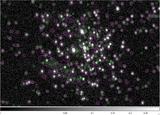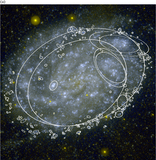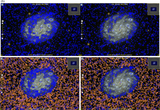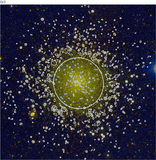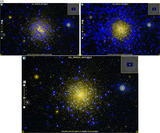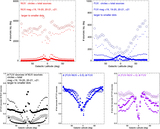Image Details
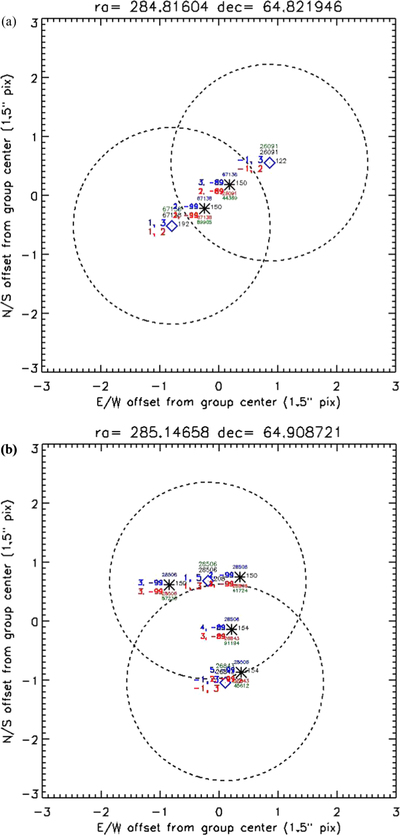
Caption: Figure 7.
Examples of multiple observations for the same source. (a) The source at the center of the lower left circle (blue diamond, id = 67138) has the best measurement out of three within 2.″5 from its position (dashed circle); therefore it is assigned grank = 1, ngrank = 3 (blue numbers at the left). Its closest neighbor has grank = 2, ngrank = −99 (because it is not a primary). The second closest, with id = 44309, has grank = 3, but ngrank = −89 because it also falls within 2.″5 of another source (id = 26091), which is farther than 2.″5 from the first primary and has an exposure time shorter than source 44309. Object id = 26091 is therefore assigned grank = −1, because it cannot be discarded as a duplicate of the first primary, but has a nearby source that has a better measurement but cannot be “primary” because it is secondary with respect to a better primary. The black numbers to the right of the sources are exposure time in seconds. The grank tag is used to eliminate secondaries in the unique-source catalog. The red numbers show the values of the same tags if we instead used a distance criterion and associate secondaries with the closest primary rather than with the “best” primary. In that case, each of these two primaries would get one secondary. Note that grank for primaries would not change. (b) Another example illustrating the definition of multiple observations for the same source, showing a different combination; the tag coding is the same as in Figure 7(a).
Copyright and Terms & Conditions
© 2017. The American Astronomical Society. All rights reserved.



